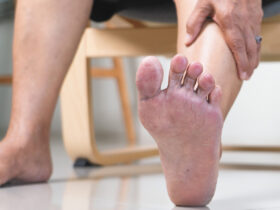By Dennis O. Sagini, MD
 The upper extremities—comprising the shoulders, arms, elbows, forearms, wrists, and hands—are essential for nearly every activity we perform throughout the day. From typing on a keyboard to lifting groceries, cooking meals to embracing loved ones, our upper limbs enable us to interact with the world around us. When injury, surgery, or chronic conditions compromise upper extremity function, targeted exercise and therapy become crucial for recovery and maintaining quality of life.
The upper extremities—comprising the shoulders, arms, elbows, forearms, wrists, and hands—are essential for nearly every activity we perform throughout the day. From typing on a keyboard to lifting groceries, cooking meals to embracing loved ones, our upper limbs enable us to interact with the world around us. When injury, surgery, or chronic conditions compromise upper extremity function, targeted exercise and therapy become crucial for recovery and maintaining quality of life.
Understanding Upper Extremity Dysfunction
Upper extremity problems can arise from various sources. Rotator cuff injuries, tennis elbow, carpal tunnel syndrome, and arthritis are among the most common conditions affecting these structures. Additionally, stroke, nerve injuries, fractures, and post-surgical rehabilitation often necessitate comprehensive therapeutic intervention. Without proper treatment, these conditions can lead to decreased range of motion, muscle weakness, chronic pain, and significant functional limitations.
The Role of Therapeutic Exercise
Upper extremity exercise therapy focuses on restoring strength, flexibility, coordination, and functional capacity. A well-designed program addresses multiple components simultaneously. Range of motion exercises help maintain or improve joint flexibility, preventing stiffness and contractures. Strengthening exercises rebuild muscle power, enabling patients to perform daily activities with greater ease and confidence. Proprioceptive training enhances spatial awareness and coordination, which is particularly important after neurological injuries.
Key Components of Upper Extremity Therapy
Effective therapy begins with a thorough assessment by qualified healthcare professionals. Physical and occupational therapists evaluate strength, range of motion, pain levels, and functional abilities to develop individualized treatment plans. Early mobilization, when appropriate, helps prevent complications such as frozen shoulder or muscle atrophy.
Progressive resistance training forms the cornerstone of strengthening programs. Starting with gentle exercises using minimal resistance, patients gradually advance to more challenging activities as their condition improves. Resistance bands, light weights, and therapeutic putty are commonly employed tools that provide adjustable resistance levels.
Flexibility exercises are equally important. Gentle stretching routines maintain tissue elasticity and joint mobility. For conditions like adhesive capsulitis or post-fracture stiffness, dedicated stretching protocols can significantly improve outcomes.
Functional Training and Real-World Application
The ultimate goal of upper extremity therapy extends beyond isolated exercises. Functional training incorporates activities that mirror real-life tasks, ensuring that improvements translate into practical benefits. Reaching overhead to retrieve objects, manipulating buttons and zippers, writing, and food preparation are examples of functional activities integrated into therapy sessions.
Home Exercise Programs and Long-Term Success
Consistency is paramount in rehabilitation. While supervised therapy sessions provide expert guidance and motivation, home exercise programs empower patients to take an active role in their recovery. Compliance with prescribed exercises accelerates healing and helps maintain gains achieved during formal therapy.
Conclusion
Upper extremity exercise and therapy represent powerful tools for restoring function and improving quality of life. Whether recovering from injury, managing chronic conditions, or regaining abilities after surgery, a comprehensive approach that combines professional guidance with patient dedication yields the best outcomes. If you’re experiencing upper extremity limitations, consult with your healthcare provider to determine whether therapeutic intervention could benefit you.
With proper treatment and commitment, most individuals can achieve significant functional improvements and return to the activities they value most. Contact our office at 239-302-3216 to schedule a consultation and take the first step toward pain-free movement and improved quality of life.
Dennis O. Sagini, MD
Dr. Sagini is an orthopedic surgeon with specialization in hand and upper extremity surgery. He specializes in arthritis of the hand, nerve compression, muscle and tendon injury, fracture care, and upper extremity dysfunction.
He completed his Bachelors of Science in Microbiology from the University of Oklahoma in Norman, Oklahoma in 1998 and his Doctor of Medicine at Temple University in Philadelphia, PA in 2002. It was during medical school training that Dr. Sagini developed an interest in orthopaedic surgery. His residency in orthopaedic surgery was completed at Howard University Hospital, Washington, DC. Dr. Sagini completed his fellowship training in Hand and Upper Extremity surgery at the University of Pittsburgh Medical Center in Pittsburgh, PA.
Dr. Sagini is a member of the Lee County Medical Society, the American Association of Orthopedic Surgery and the American Board of Orthopedic Surgery.
Dr. Sagini is active in research and community service and has a passion for overseas medical mission work. He also enjoys running, traveling, listening to music, cooking, tennis, and spending time with his family and friends.
239-302-3216 | saginimd.com
13691 Metro Pkwy, Suite 400
Fort Myers, FL 33912









